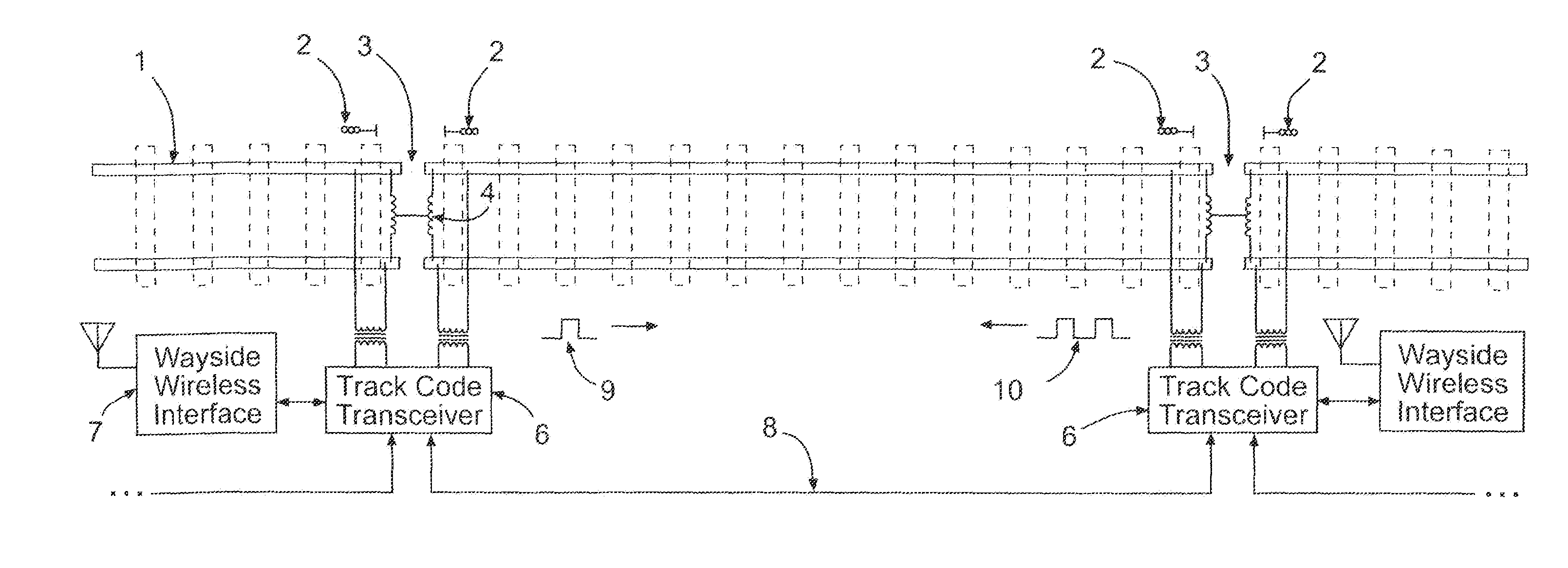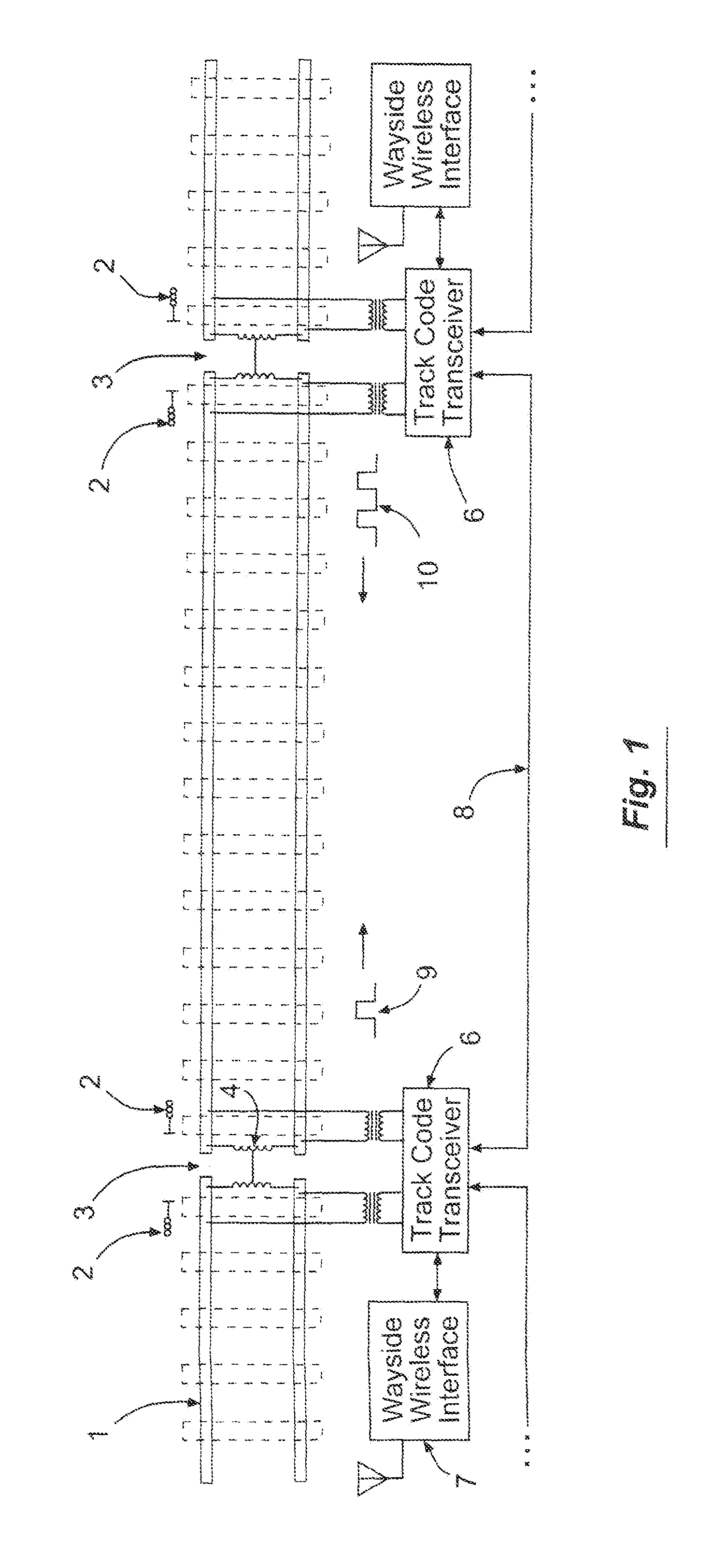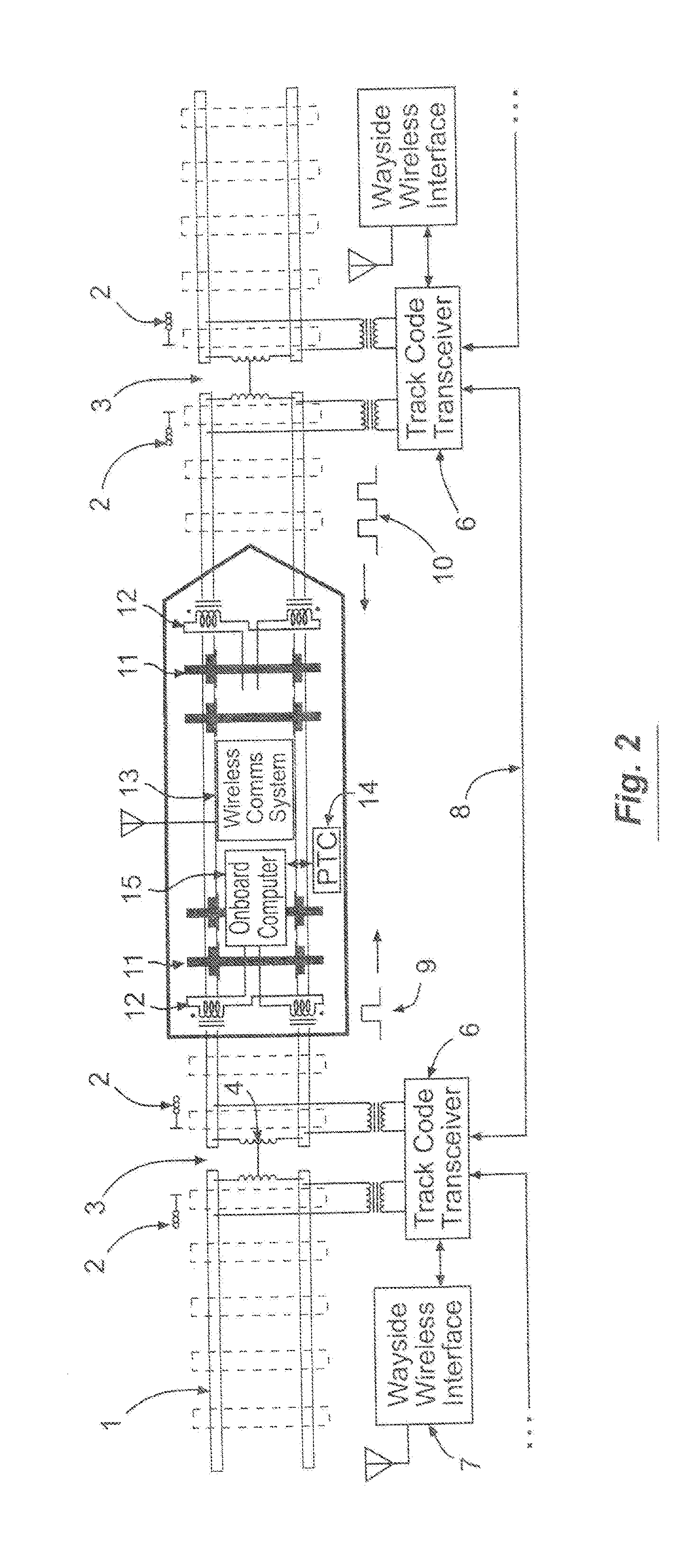Method for detecting the extent of clear, intact track near a railway vehicle
a technology for railway vehicles and tracks, applied in the field of railway signaling, to achieve the effect of shortening the headway and improving the utilization efficiency of tracks
- Summary
- Abstract
- Description
- Claims
- Application Information
AI Technical Summary
Benefits of technology
Problems solved by technology
Method used
Image
Examples
Embodiment Construction
[0026]Before describing in detail the system and method for detecting broken rail or occupied track from a moving locomotive, it should be observed that the present invention resides primarily in what is effectively a novel combination of conventional electronic circuits, electronic components, and signal processing / estimation algorithms, and not in the particular detailed configurations thereof. Accordingly, the structure, control, and arrangement of these conventional circuits, components, and algorithms have been illustrated in the drawings by readily understandable block diagrams which show only those specific details that are pertinent to the present invention, so as not to obscure the disclosure with structural details which will be readily apparent to those skilled in the art having the benefit of the description herein. Thus, the block diagram illustrations of the figures do not necessarily represent the mechanical or structural arrangement of the exemplary system, but are p...
PUM
 Login to View More
Login to View More Abstract
Description
Claims
Application Information
 Login to View More
Login to View More - R&D
- Intellectual Property
- Life Sciences
- Materials
- Tech Scout
- Unparalleled Data Quality
- Higher Quality Content
- 60% Fewer Hallucinations
Browse by: Latest US Patents, China's latest patents, Technical Efficacy Thesaurus, Application Domain, Technology Topic, Popular Technical Reports.
© 2025 PatSnap. All rights reserved.Legal|Privacy policy|Modern Slavery Act Transparency Statement|Sitemap|About US| Contact US: help@patsnap.com



